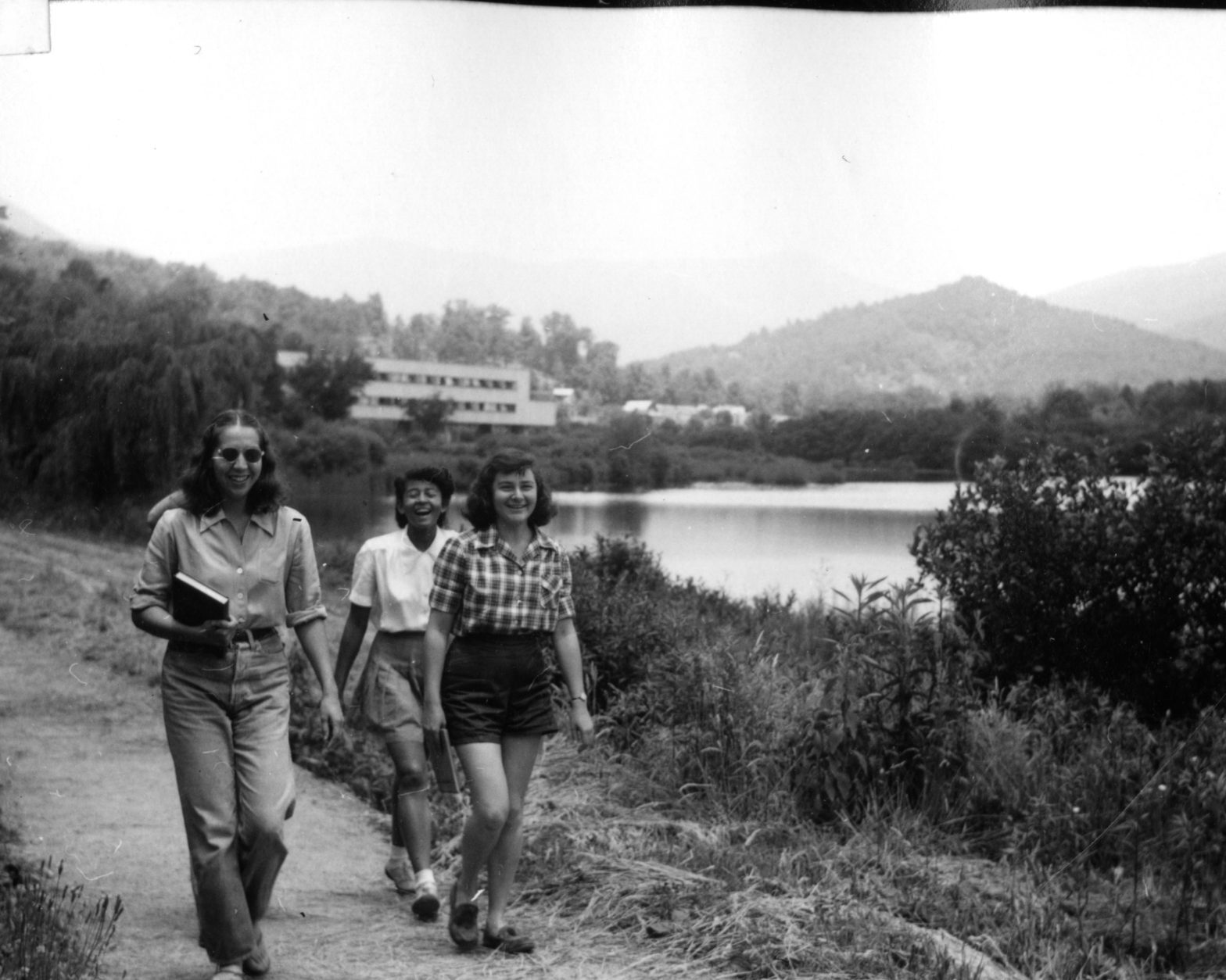“At Black Mountain College, art was people.”
– Alma Stone Williams
Black Mountain College was an experimental liberal arts college in North Carolina from 1933-1957. Ruth Asawa was a student there from 1946-49, taught by international artists and progressive tutors who she said: “profoundly influenced my outlook on the value of life and the true nature of freedom.”
The college was founded in 1933 by John Andrew Rice, a follower of philosopher John Dewey’s ideas about progressive education. Through holistic learning and an emphasis on the arts, the college aimed to “educate a student as a person and a citizen.” Surrounded by mountains and forests, the idyllic environment and liberal approach made it an extraordinary place, particularly in relation to its location, deep in the Jim Crow South, where racial segregation was legally enforced in public facilities.
The principles of the Black Mountain were democratic: students and faculty members made decisions together; no classes were compulsory; and everyone took part in farm work, construction and kitchen duties. Students were taught by practising artists, and while many non-arts courses such as biology and American history were taught at the college, art making was seen as fundamental across subjects.
Ruth Asawa described “probably the most important thing that Black Mountain offered” as: “the idea of the practising artist teaching the craft in which he makes his living by.” Her teachers included artist Josef Albers, architect and inventor Buckminster Fuller, and dancer Merce Cunningham. Artists Gwendolyn Knight and Mary Parks Washington, ceramicist and poet MC Richards, and photography critic Nancy Newhall were among her fellow students.
Over the coming weeks our #WomenOfBMC series will celebrate the women of Black Mountain College. Like Asawa, many have not received the same recognition as their male contemporaries, and we are excited to share archival material that sheds light on their stories. With huge thanks to Heather South, Lead Archivist at the Western Regional Archives, North Carolina, for her generosity and help with this research.
In the next post we will delve into the story of Alma Stone Williams, musician, scholar, educator and pioneer in racial integration.
Image: Lunch run on the path between the Studies Building and Dining Hall. L to R: Patsy Lynch, Vesta Martin, and Fanny Hobart. c.1946. Photograph by Stuart Atkinson. North Carolina Museum of Art, Black Mountain College Research Project, Visual Materials, Box 88. Courtesy Western Regional Archives, State Archives of North Carolina.
